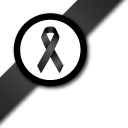
สืบค้นงานวิจัย

ครามและผลิตภัณฑ์จากคราม
- มหาวิทยาลัยราชภัฏสกลนคร
หากไม่พบเอกสารฉบับเต็ม (Full Text) โปรดติดต่อหน่วยงานเจ้าของข้อมูล
การอ้างอิง
TARR Wordcloud:
ครามและผลิตภัณฑ์จากคราม
มหาวิทยาลัยราชภัฏสกลนคร
30 กันยายน 2551
การศีกษาสภาพการผลิตและตลาดครามของเกษตรกรโครงการพัฒนาผลิตภัณฑ์เด่นผ้าฝ้ายย้อมคราม ปีเพาะปลูก 2545/2546
การศึกษาลักษณะทางพฤกษศาสตร์ การเพิ่มผลผลิตใบ ปริมาณสีและครามผงของครามงอ (Indigofera tinctoria L.)
การสร้างและพัฒนาผลิตภัณฑ์มูลค่าสูงจากเส้นใยไหมป่า
การพัฒนาผลิตภัณฑ์ผ้าฝ้ายย้อมครามเพื่อขยายตลาดไปยังลูกค้ากลุ่มใหม่: กรณีศึกษากลุ่มทอผ้าฝ้ายย้อมคราม อำเภอพรรณนานิคม จังหวัดสกลนคร
โครงการวิจัยและพัฒนาการผลิตครามในพื้นที่จังหวัดสกลนคร
การจัดการความรู้การทอผ้าย้อมครามในจังหวัดสกลนคร
การพัฒนาผลิตภัณฑ์อาหารจากภูมิปัญญาข้าวฮาง
20 ผลิตภัณฑ์นวัตกรรมสร้างสรรค์ภูมิปัญญาไทย
ลำไยและผลิตภัณฑ์
ผลิตภัณฑ์ดินสอพอง
|
|


